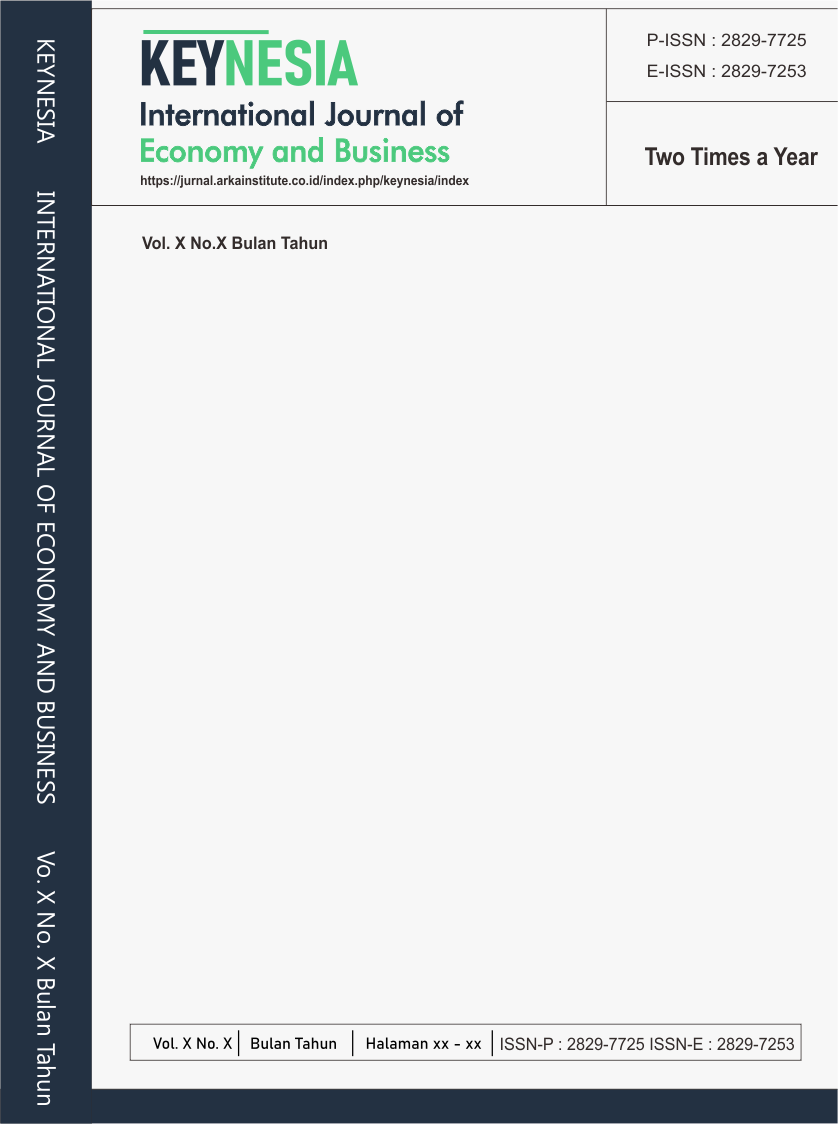Cold chain analysis of the fish auction place process in maintaining the quality of fish products in Kali Baru
Main Article Content
Abstract
Fishery commodities are one of the commodities that have not been widely studied in terms of their distribution system. The cold chain system is important in the distribution system for fish products. The purpose of this study was to evaluate the effectiveness of the cold chain system at the trader level at the Kalibaru Barat Fish Landing Place (TPI). Qualitative methods were used in this study, and qualitative data were collected through observation and interviews with fish traders and consumers in traditional markets. The results showed that the West Kalibaru Fish Auction Center is the largest source of fish feed in the Cilincing area. The distribution chain shows that the West Kalibaru Fish Auction Center plays an important role in distributing fish products directly to consumers and fish restaurants. Consumers are highly dependent on Kalibaru Barat Fish Auction Market for their daily food supply. At Kalibaru Barat Fish Auction Market, the cold chain system has not been properly implemented, and the traders at Kalibaru Barat Fish Auction Market have a damaged cold chain system. The importance of fish traders' knowledge and motivation regarding the use of ice to maintain fish quality and freshness, as well as the need to improve the quality of facilities and infrastructure at the fish auction site to increase productivity at the Kalibaru Market, is still very much needed so that traders do not sell on the side of the market or on the sidewalk using tarpaulin roofs.
Article Details
Section

This work is licensed under a Creative Commons Attribution-NonCommercial 4.0 International License.
References
Abdullah, Rianto, B., & Aina, S. (2019). Prediksi Kualitas Ikan Senangin Berdasarkan Warna dan Tekstur. Jurnal Informatika Dan Komputer, 4(1), 35–44. https://doi.org/10.26798/jiko.v4i1.176
Grema, H. A., Kwaga, J. K. P., Bello, M., & Umaru, O. H. (2020). Understanding fish production and marketing systems in North-western Nigeria and identification of potential food safety risks using value chain framework. Preventive Veterinary Medicine, 181, 105038. https://doi.org/10.1016/j.prevetmed.2020.105038
Herlambang, T. (2025). Market Access and Value Chain Efficiency in Small-Scale Fisheries: A Case Study from Indonesia. The Journal of Academic Science, 2(6), 1639–1646. https://doi.org/10.59613/3kjnnx91
Hu, F., Zhong, H., Wu, C., Wang, S., Guo, Z., Tao, M., Zhang, C., Gong, D., Gao, X., Tang, C., Wei, Z., Wen, M., & Liu, S. (2021). Development of fisheries in China. Reproduction and Breeding, 1(1), 64–79. https://doi.org/10.1016/j.repbre.2021.03.003
James, S. J., & James, C. (2023). Chilling and freezing. In Food safety management (pp. 453–474). Elsevier. https://doi.org/10.1016/B978-0-12-820013-1.00005-X
Lestari, N., Yuwana, Y., & Efendi, Z. (2015). Identifikasi tingkat kesegaran dan kerusakan fisik ikan di Pasar Minggu Kota Bengkulu. Jurnal Agroindustri, 5(1), 44–56.
Lim, W. M. (2025). dWhaaolarict is qualitative research? An overview and guidelines. Australasian Marketing Journal, 33(2), 199–229. https://doi.org/0.1177/14413582241264619
Mailoa, M. N., Savitri, I. K. E., Lokollo, E., Kdise, S. S., Perikanan, H., Perikanan, F., & Kelautan, I. (2020). Mutu organoleptik ikan layang (Decapterus sp.) segar selama penjualan di pasar tradisional Kota Ambon. Majalah Biam, 16(1), 36–44. https://doi.org/10.29360/mb.v16i1.6149
Rahman, L. F., Alam, L., Marufuzzaman, M., & Sumaila, U. R. (2021). Traceability of sustainability and safety in fishery supply chain management systems using radio frequency identification technology. Foods, 10(10). https://doi.org/10.3390/foods10102265
Savitri, I. K. E., Apituley, Y., Bawole, D., & Tuapetel, F. (2019). Quality control of small pelagic fish stocks in distribution line in Ambon and Kei Kecil, Maluku. IOP Conference Series: Earth and Environmental Science, 339(1), 12055. https://doi.org/10.1088/1755-1315/339/1/012055
Siddiqui, S. A., Singh, S., Bahmid, N. A., & Sasidharan, A. (2024). Applying innovative technological interventions in the preservation and packaging of fresh seafood products to minimize spoilage-A systematic review and meta-analysis. Heliyon, 10(8).
Turan, C., & Ozturkoglu, Y. (2022). A conceptual framework model for an effective cold food chain management in sustainability environment. Journal of Modelling in Management, 17(4), 1262–1279. https://doi.org/10.1108/JM2-09-2020-0239
Wang, H., Bai, B., Wang, Y., Bai, T., Shi, W., Wang, X., Wang, W., Yang, J., & Pan, S. (2025). Current trends and perspectives on the color of fish during low-temperature preservation: A focus on evaluation methods, discoloration mechanism, and protection methods. Food Chemistry, 143199. https://doi.org/10.1016/j.foodchem.2025.143199
Wibowo, R. B. T. J., & Anggraeni, E. (2025). Sustainability factor analysis of tuna agroindustry cold chain management. IOP Conference Series: Earth and Environmental Science, 1510(1), 12033.
Yang, Y.-C., & Lin, H.-Y. (2017). Cold supply chain of longline tuna and transport choice. Maritime Business Review, 2(4), 349–366.

